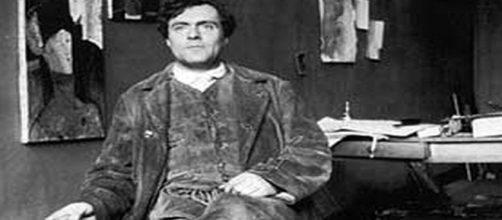It's hard to believe that Amedeo Modigliani's painting of a nude woman ( "Nu couche") introduced in Paris in 1917 caused such an uproar that police had to be called. There's not a sex organ in sight! This week, the work goes on the auction block for a record-breaking ask of $100 million and you have to wonder what was so shameless about the nude given that the subject overspreads art history.
Making the French blush
All you see is a woman's bare back. What was so brazen about that, especially when compared to the flaunting of frontal female flesh through the ages?
The French had to have known their own history on this subject. I'm thinking of the unblushing examples by Eugene Delacroix ("Woman with a Parrot"), Jean-Auguste Ingres ("Odalisque as Slave"), Jean-Auguste Renoir ("La Boulanger"), and Edouard Manet ("Olympia"). An old cartoon comes to mind that may explain (admittedly a stretch) why "Nu couche" scandalized anyone. The drawing showed two men gazing upon a painting marked “sold” of a woman's exposed back just like the one in Modigliani's painting. One of the men says to the other, “So you decided to buy it?” And the other answers, “Yes, after turning it over in my mind.” Is that it? Did French art lovers raise a ruckus because of a mental picture?
How else to explain the fuss in an art world brimming with buck-naked bodies?
Making nakedness disappear without removing it
In fact, there have been so many people in a state of undress in painting and sculpture that it's a challenge for contemporary artists to treat the subject in a fresh and original way. Photographer Spencer Tunick found a way. He snaps stripped-down people in crowds so dense that their mass takes on a shape unrelated to the human form. He's readying to do it again, having announced this week that his next effort will take place on Melbourne's popular Chapel Street.. Australia has seen him at work before. Nearly a decade ago, he photographed thousands of unclothed men and women on the steps of the Sydney Opera House.
And true to form, you couldn't discern the nudity (or the steps for that matter).
Is it worth the effort?
Capturing upwards of 5,000 naked people sounds like a logistical nightmare when compared to posing a single model. Tunick explained why he bothered in an exhibit catalog for the Munich Opera Festival in 2012: “These grouped masses which do not underscore sexuality become abstractions that challenge or reconfigure one's views of nudity and privacy." In that way, he's done Renoir one better. The Impressionist, known for constantly rendering women in the buff, famously said, “Il peint avec mon bitre” (I paint with my penis). So Tunick's work is an achievement of sorts. How many artists can say that naked people are their subject and not only leave sexuality out of the picture, but also the nakedness itself?


